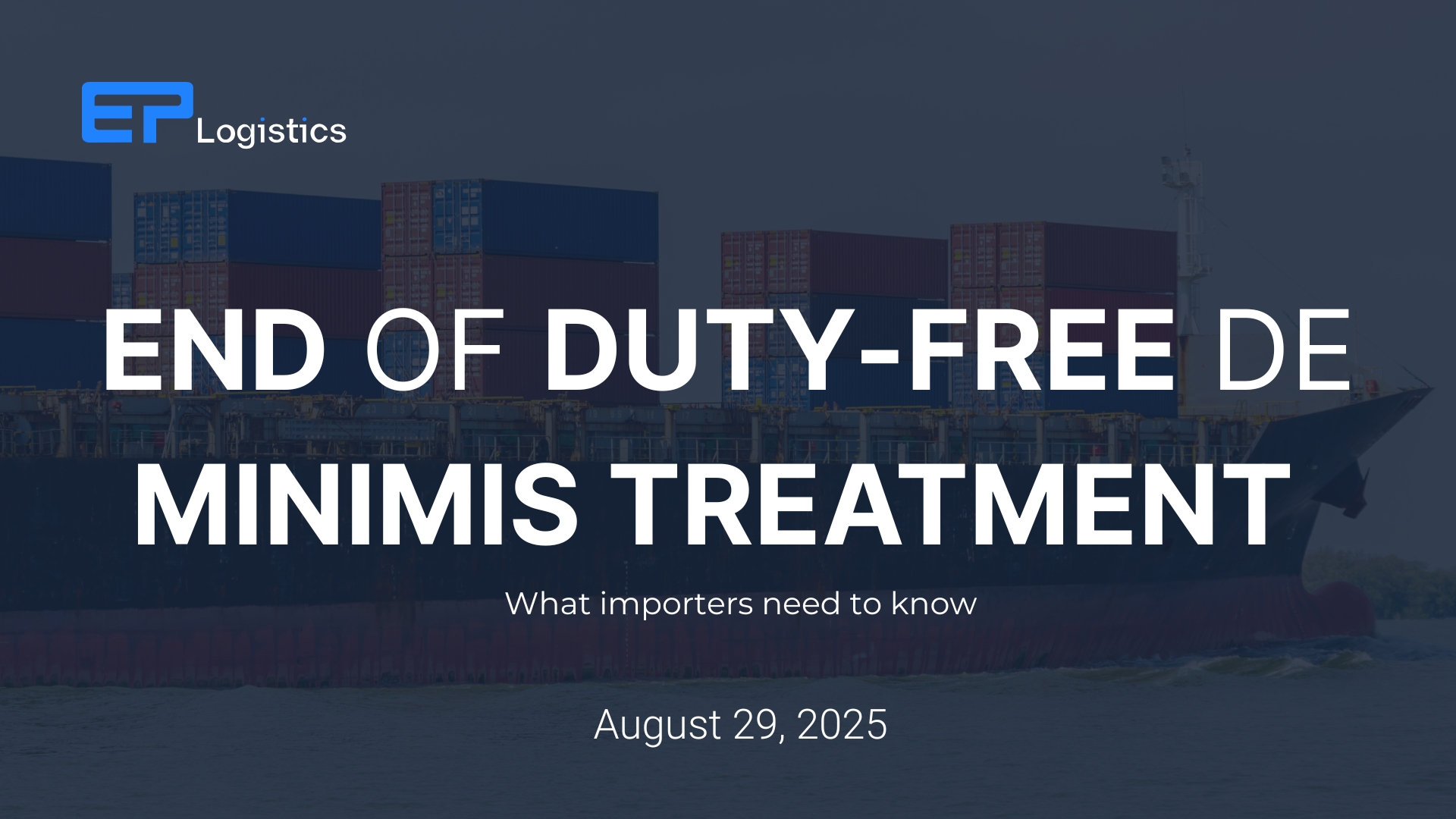On July 30, 2025, the White House issued an Executive Order suspending duty-free de minimis treatment for all countries. Effective August 29, 2025 at 12:01 a.m. ET, U.S. Customs and Border Protection (CBP) implemented this change, officially ending the long-standing exemption that allowed goods valued at $800 or less to enter the U.S. without duties and taxes.
This is a significant shift in U.S. trade policy, impacting importers, e-commerce platforms, retailers, and consumers alike.
What Changed?
- No more $800 free pass. All imports into the U.S. regardless of value, origin, transport mode, or entry method are now subject to duties, taxes, and fees.
System updates in ACE:
- Section 321 manifest filings via EDI are now rejected.
- The Truck Manifest Trade Portal no longer allows Section 321 filings.
- Entry Type 86 cargo release EDI transactions are also rejected.
New filing requirements:
- Importers must file an appropriate formal or informal entry in ACE.
- Paper informal entries are not permitted.
- For informal entries valued at $2,500 or less, CBP may now require a basic importation and entry bond under 19 CFR 113.62.
What About Postal Shipments?
Shipments entering through the international postal network are also impacted:
- No new entry process will be accepted until CBP publishes regulations in the Federal Register.
- In the interim, carriers (or qualified parties) must collect and remit duties to CBP using one method consistently per calendar month:
Two options are allowed until February 28, 2026:
1. Ad valorem duty: based on the IEEPA tariff rate for the country of origin.
2. Flat fee duty per item:
- $80 (tariffs <16%)
- $160 (tariffs 16–25%)
- $200 (tariffs >25%)
After February 28, 2026, only the ad valorem method will apply.
Carriers must also hold an international carrier bond under 19 CFR 113.64 sufficient to cover assessed duties.
Why This Matters
The suspension of de minimis treatment comes through multiple Executive Orders, including:
- EO 14193 – Canada
- EO 14194 – Mexico
- EO 14195 – China and Hong Kong
- EO 14257 – Global trade-deficit measures
According to the U.S. government, this move is intended to:
- Prevent misuse of the de minimis threshold (such as smuggling).
- Strengthen national security.
- Create a fairer environment for U.S. businesses competing with foreign e-commerce sellers.
The ripple effects are already being felt:
- Some postal carriers have paused or restricted U.S.-bound shipments due to the new complexity.
- Importers face higher landed costs and compliance responsibilities.
- Retailers and e-commerce platforms need to adjust quickly to the new requirements.
Recommended Next Steps for Importers
To stay compliant and avoid disruptions, importers should:
- Update landed-cost models and budgets to include new duties.
- Verify ACE account settings and bonds (entry bonds for informal shipments; international carrier bonds for postal).
- Revise internal compliance manuals to reflect updated filing procedures.
- Add quality-control checks to guard against mislabeling or false invoicing.
- Stay close to CBP communications and prepare for new Federal Register updates.
How EP Logistics Can Help
At EP Logistics, we know these changes are complex. Our compliance and customs experts are here to:
- Guide you through updated ACE filing requirements.
- Ensure your entries are compliant and accurate.
- Help you plan strategies that reduce disruptions in your supply chain.
Contact us at sales@eplogistics.com for [ made to order ] guidance.
This is one of the most important trade policy shifts in recent years. While it raises new challenges for importers, it also highlights the importance of having a trusted logistics partner by your side.
At EP Logistics, we’re committed to helping you adapt with confidence and keep your shipments moving.

